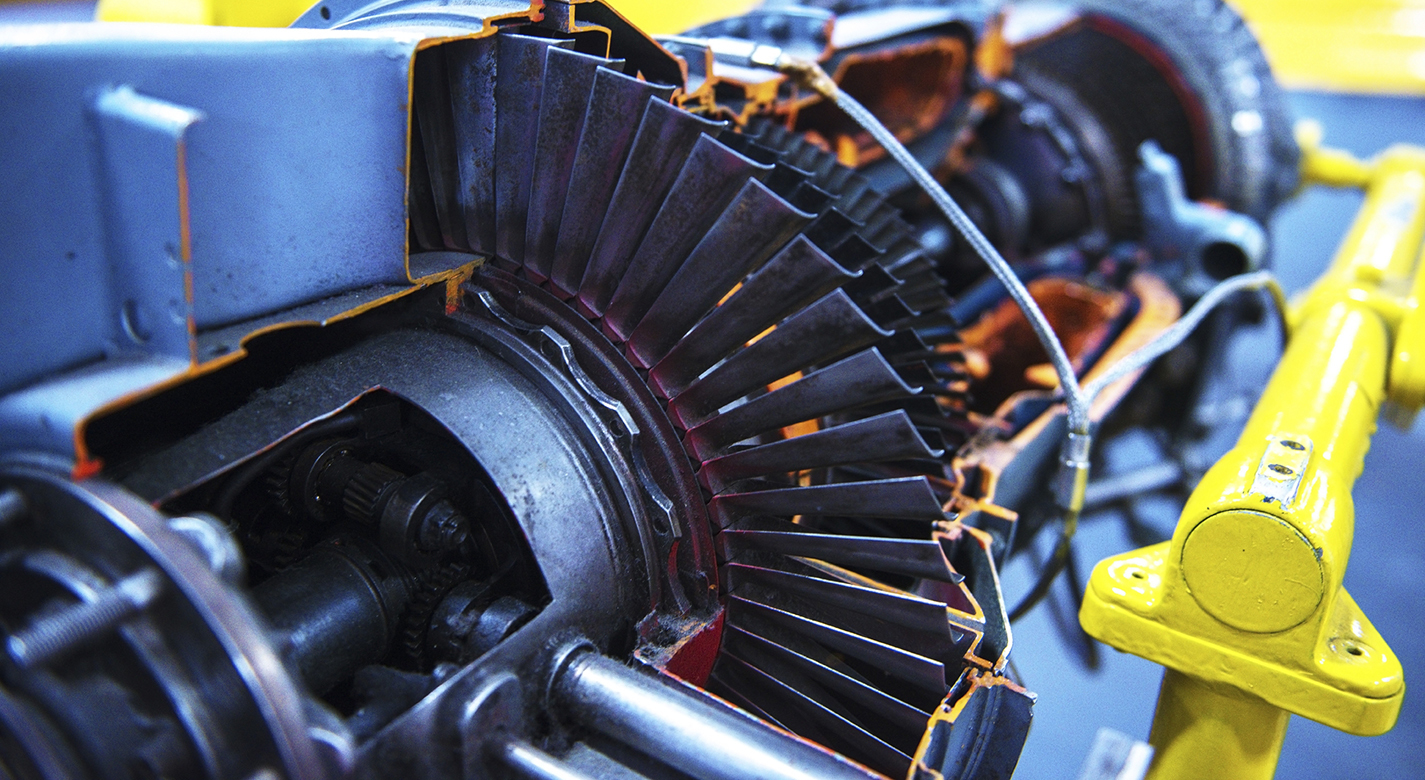Analog Signal Correlating
electrical and electronics
Analog Signal Correlating (LEW-TOPS-69)
Increases speed of calculations for combustion diagnostics, sensing, and more
Overview
This innovation from NASA's Glenn Research Center is capable of correlating two analog signals by using an analog-based signal conditioning front end to hard-limit the analog signals through adaptive thresholding into a binary bit stream. The correlation is then performed using a Hamming similarity calculator function embedded in a one-bit digital correlator (OBDC). By converting the analog signal into a bit stream, the calculation of the correlation function is simplified, and fewer hardware resources are needed. This binary representation allows the hardware to move from a digital signal processor, where instructions are performed serially, into digital logic where calculations can be performed in parallel, greatly speeding up calculations.
The Technology
Each of two analog signals (channels A and B) is converted to a digital bit stream by phase correcting it and comparing it to an average of itself at a sampling clock rate f. The hard-limited conversions of A and B are bitwise compared to measure the level of similarity between the two by the OBDC. This similarity measurement X is equal to the maximum possible Hamming distance (N bits in disagreement) minus the measured number of bits in disagreement.
The OBDC functions are embedded into a field programmable gate array (FPGA). The OBDC is made up of two shift registers containing the current sample values (of length N) from each of the two input channels (A and B). During each sample clock, a new sample from each A and B input is clocked into the input linear shift register for each respective channel; this input shifts the current values in the linear shift register. Once the inputs have been clocked in, the correlation routine can start. Once the correlation value has been calculated, this result is forwarded to compare with the max correlation value register. If the X value is greater than the current max correlation value, then the max correlation value becomes X, and the shift counter register is latched and put into the best correlation index register, providing the index of the current best correlation. This index is the number of sample clock periods difference between the two input signals and thus, for sample clock rate f, indicates the delay between the signals A and B.
This is an early-stage technology requiring additional development. Glenn welcomes co-development opportunities.


Benefits
- Streamlined: Reduces hardware requirements
- Fast: Increases speed of calculations
- Efficient: Decreases size and power consumption
Applications
- Unmanned vehicles
- Acoustic sensing
- Acoustic tomography systems
- Engine diagnostics
Similar Results

Signal Combiner for Wideband Communication
Through low-loss signal combination, Glenn is leading the way to optimize radio transmission remotely during self-checking routines. Glenn's signal combiner offers a simple method to minimize signal loss significantly when combining two signals. Using conventional combiners in bit-error-rate testing results in a loss of 3 to 4 dB per band, and with a directional coupler the secondary signal experiences losses of 10 dB or more. Moreover, during signal measurements, the additional components must be placed and later removed to prevent any impact to the measurement, making for a cumbersome process. Glenn's solution is to combine the primary and secondary signals in the frequency domain through the use of a frequency division diplexer/multiplexer in combination with a wideband ADC. The multiplexer selects one or more bands in the frequency domain, and the ADC performs a non-linear conversion to digital domain by folding out-of-band signals in with the primary signal. NASA makes use of subsampling a given band within the ADC bandwidth to fold it into another band of interest, effectively frequency-shifting them to a common frequency bandwidth.
Glenn's breakthrough method has two significant advantages over the conventional use of a power combiner or directional coupler in bit-error-rate testing: 1) it combines signal and noise (secondary signal) with very low loss, and 2) it enables the selection of the desired signal-to-noise ratio with no need for the later cumbersome removal of components. This streamlined process allows for invaluable in-situ or installed measurement. Glenn's novel technology has great potential for satellite, telecommunications, and wireless industries, especially with respect to equipment testing, measurement, calibration, and check-out.

High-Speed, Low-Cost Telemetry Access from Space
NASA's SDR uses Field-Programmable Gate Array (FPGA) technology to enable flexible performance on orbit. A first-generation FM-modulated transceiver is capable of operating at up to 1 Mbps downlink and 50 kbps uplink, full duplex. An FPGA performs Reed-Solomon (255,223) encoding, decoding, and bit synchronization, providing Consultative Committee for Space Data Systems (CCSDS) and Near Earth Network (NEN) telemetry protocol compatibility. The transceiver accepts data from the onboard flight computer via a source synchronous RS422 interface.
NASA's second-generation full duplex SDR, known as PULSAR (programmable ultra-lightweight system-adaptable radio, Figures 1 and 2 below) incorporates command receiver and telemetry transmitters, as well as updated processing and power capabilities. An S-band command receiver offers a max uplink data rate of 300 Kbps and built-in QPSK demodulation. X- and S-Band telemetry transmitters offer a max downlink data rate of 150 Mbps and flexible forward-error correction (FEC) using Reed-Solomon encoding (LDPC rate 7/8 and 1/2 convolution in development), and it uses QPSK modulation. The use of FEC adds an order of magnitude increase in telemetry throughput due to an improved coding gain. An onboard FPGA uses high-speed logic for uplink/downlink and encoding/decoding processes. Balloon flight testing has been conducted and is ongoing for PULSAR.

Cascaded Offset Optical Modulator
A unique challenge in the development of a deep space optical SDR transmitter is the optimization of the ER. For a Mars to Earth optical link, an ER of greater than 33 dB may be necessary. A high ER, however, can be difficult to achieve at the low Pulse Position Modulation (PPM) orders and narrow slot widths required for high data rates. The Cascaded Offset Optical Modulator architecture addresses this difficulty by reducing the width of the PPM pulse within the optical modulation subsystem, which relieves the SDR of the high signal quality requirements imposed by the use of an MZM. With the addition of a second MZM and a variable time delay, all of the non-idealities in the electrical signal can be compensated by slightly offsetting the modulation of the laser. The pulse output is only at maximum intensity during the overlap of the two MZMs. The width of the output pulse is effectively reduced by the offset between MZMs. Measurement and analysis of the system displayed, for a 1 nanosecond pulse width, extinction ratios of of 32.5 dB, 39.1 dB, 41.6 dB, 43.3 dB, 45.8 dB, and 48.2 dB for PPM orders of 4, 16, 32, 64, 128, and 256, respectively. This approach is not limited to deep space optical communications, but can be applied to any optical transmission system that requires high fidelity binary pulses without a complex component. The system could be used as a drop-in upgrade to many existing optical transmitters, not only in free space, but also in fiber. The system could also be implemented in different ways. With an increase in ER, the engineer has the choice of using the excess ER for channel capacity, or simplifying other parts of the system. The extra ER could be traded for reduced laser power, elimination of optical amplifiers, or decreased system complexity and efficiency.

Data Transfer for Multiple Sensor Networks
High-temperature sensors have been used in silicon carbide electronic oscillator circuits. The frequency of the oscillator changes as a function of changes in the sensor's parameters, such as pressure. This change is analogous to changes in the pitch of a person's voice. The output of this oscillator, and many others may be superimposed onto a single medium. This medium may be the power lines supplying current to the sensors, a third wire dedicated to data transmission, the airwaves through radio transmission, or an optical or other medium. However, with nothing to distinguish the identities of each source, this system is useless. Using frequency dividers and linear feedback shift registers, comprised of flip flops and combinatorial logic gates connected to each oscillator, unique bit stream codes may be generated. These unique codes are used to amplitude modulate the output of the sensor (both amplitude shift keying and on-off keying are applicable). By using a dividend of the oscillator frequency to generate the code, a constant a priori number of oscillator cycles will define each bit. At the receiver, a detected frequency will have associated with it a stored code pattern. Thus, a detected frequency will have a unique modulation pattern or "voice," disassociating it from noise and from other transmitting sensors. These codes may be pseudorandom binary sequences (PRBS), ASCII characters, gold codes, etc. The detected code length and frequency are measured, offering intelligent data transfer.
This is an early-stage technology requiring additional development. Glenn welcomes co-development opportunities.

Adaptive Algorithm and Software for Recognition of Ground-based, Airborne, Underground, and Underwater Low Frequency Events
Acoustical studies of atmospheric events like convective storms, shear-induced turbulence, acoustic gravity waves, microbursts, hurricanes, and clear air turbulence over the last forty-five years have established that these events are strong emitters of infrasound (sound at frequencies below 20 Hz). Over the years, NASA Langley has designed and developed a portable infrasonic detection system which can be used to make useful infrasound measurements at a location where it was not possible previously. The system comprises an electret condenser microphone, and a small, compact windscreen. The system has been modified to be used in the air, underground, as well as underwater (to determine man-made and precursor to tsunami). The system also features a data acquisition system that permits real-time detection, bearing, and signature of a low frequency source. However, to determine bearing of the received signals, the microphones are to be arranged as an equilateral triangle with a certain microphone spacing. The spacing depends upon location of the microphone array. For a ground-based array, the microphone spacing of 100 feet (30.48m) is desired to determine time delay for signals arriving at each microphone location. The microphone spacing depends upon speed of sound through the array medium. For underwater array, the spacing between microphones would be around 1500 feet. The data acquisition system provides data output in the infrasonic bandwidth which is then analyzed using an adaptive algorithm (least-mean-squares time-delay-estimation) using modern computational power to locate source by plotting source location hyperbolas on-line.
A smaller array size reduces the time resolution resulting in strong signal coherence. The innovation approach is to exploit modern signal processing methods, i.e. adaptive filtering, where computer is trained on-line to recognize features of the event to be detected. Modern computational capability permits the adaptive algorithm (least-mean-squares time-delay estimation or LMSTDE) which is vastly more powerful algorithm. This system has better resolution able to determine direction with arrived signals within five-degree accuracy.


